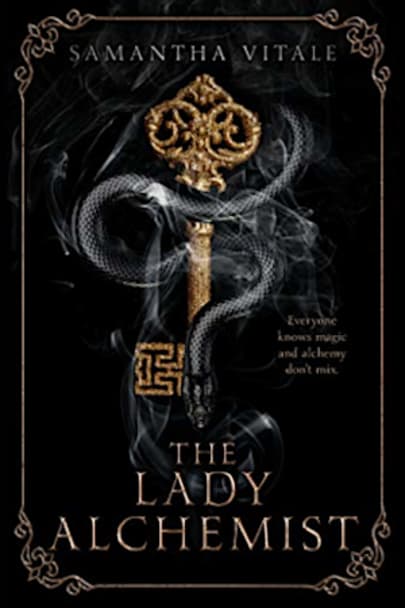In a land torn between magic and alchemy, Sepha is an exceptional alchemist, able to bend the rules in ways no one else can. But when a slip of the tongue lands her in prison with a mountain of straw, even she has to admit that she can’t transmute straw into gold.With the threat of a death sentence hanging over her, she’s forced to make a deal with a conniving magician. Sepha escapes with her … life – but at a cost: she has one year to alchemically create a body for the magician, or else her firstborn child will be his.As Sepha’s deadline approaches, she uncovers a deadly secret. How can she save her country when the body she owes the magician will be used to destroy it?
more



The Lady Alchemist starts out with a well known fairy tale premise, inspired almost directly from the tale of Rumpelstiltskin and is blended with the anime show Full Metal Alchemist. Sepha is a young woman with a skill at alchemy – transforming one material into another using complex drawings (called alchems) to achieve the transformation. But when a demonstration for the Magistrate goes awry, Sepha tries to fix the problem by claiming that she can transform anything into anything. The Magistrate takes up her offer and orders Sepha to transform straw into gold by morning or be killed. It is an impossible task, but Sepha is saved by the appearance of a magician who offers to do the transformation for her, in exchange for Sepha’s first born child. Sepha knows that magicians are evil, but she agrees to the bargain thinking she can find a way out of the magical contract before the magician’s deadline. The magician turns the straw into gold, and so begins Sepha’s journey into a wider world that she thought she knew but is filled with mystery, intrigue, and dangers she is not prepared for.
As the story begins, the comparison to Rumpelstiltskin is unmistakable, and probably clearly intended by Samantha Vitale. I would presume that the comparison with Full Metal Alchemist is also intended, or at least is there as a nod to that manga/anime. And so as I read the story I was not expecting much beyond those basic comparisons. But the more I read, the more Samantha surprised me, adding new twists to the story and hidden depths to the characters. The more I read, the more that my outlook on The Lady Alchemist changed. I found the world-building interesting, and how the idea of alchemy (in the pseudo-magical way that it is portrayed) and actual magic function and mix. The story goes beyond a simple retelling of Rumpelstiltskin.
My largest concern about the story has to do with Sepha. In the beginning of the story she’s described as a alchemist savant, able to do things no other alchemists can do. But we are never shown her skills – at least not to that degree. The big presentation for the Magistrate is foiled, and she is unable to perform the impossible task of turning straw to gold. As she travels to the capital to study and become a true alchemist we only see Sepha attempt a few alchemical transformations in her pursuit of getting out of the magician’s contract. I would have preferred to have seen Sepha actually perform “the impossible”, or at least the alchemist’s definition of what that would be earlier in the story to get a better idea of what makes her special. We are told she’s special many times, but never shown, and I feel that this detracts from the story.
The Lady Alchemist is an entertaining story that is filled with subtle plot twists and dynamic world-building. I recommend for anybody looking for a new twist on an old fairy tale, or who has an interest in anime-style fantasy.